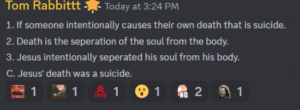The following list of covid related terms is compiled from medical and governmental sources. We need to be informed about what things mean in this dictionary is to help.
- Antibody
- “An antibody is a protein produced by the body’s immune system when it detects harmful substances, called antigens. Examples of antigens include microorganisms (bacteria, fungi, parasites, and viruses) and chemicals…Each type of antibody is unique and defends the body against one specific type of antigen.” (medlineplus.gov/ency/article/002223.htm)
- Antigens
- “Any substance that causes the body to make an immune response against that substance. Antigens include toxins, chemicals, bacteria, viruses, or other substances that come from outside the body. Body tissues and cells, including cancer cells, also have antigens on them that can cause an immune response. These antigens can also be used as markers in laboratory tests to identify those tissues or cells.” (cancer.gov/publications/dictionaries/cancer-terms/def/antigen)
- Bacteria
- “Bacteria are single celled microbes. The cell structure is simpler than that of other organisms as there is no nucleus or membrane bound organelles. Instead their control centre containing the genetic information is contained in a single loop of DNA.” (microbiologysociety.org/why-microbiology-matters/what-is-microbiology/bacteria.html)
- “Bacteria are small single-celled organisms. Bacteria are found almost everywhere on Earth and are vital to the planet’s ecosystems. Some species can live under extreme conditions of temperature and pressure. The human body is full of bacteria, and in fact is estimated to contain more bacterial cells than human cells. Most bacteria in the body are harmless, and some are even helpful. A relatively small number of species cause disease.” (genome.gov/genetics-glossary )
- Breakthrough Infection
- “a vaccine breakthrough infection is defined as the detection of SARS-CoV-2 RNA or antigen in a respiratory specimen collected from a person ≥14 days after receipt of all recommended doses of an FDA-authorized COVID-19 vaccine.” (cdc.gov/mmwr/volumes/70/wr/mm7021e3.htm)
- Cluster
- “Cluster refers to an aggregation of cases grouped in place and time that are suspected to be greater than the number expected, even though the expected number may not be known.” (cdc.gov/csels/dsepd/ss1978/lesson1/section11.html)
- Comorbidity
- “the occurrence of more than one illness or condition at the same time.” (collinsdictionary.com/dictionary/english/comorbidity)
- “A concomitant but unrelated pathological or disease process.” (dictionary.com/browse/comorbidity)
- Covid-19
- “Coronavirus disease 2019 (COVID-19) is an infectious disease caused by the novel coronavirus, SARS-CoV-2, that appeared in late 2019. It is predominantly a respiratory illness that can affect other organs. People with COVID-19 have reported a wide range of symptoms, ranging from mild symptoms to severe illness. Symptoms may appear 2 to 14 days after exposure to the virus. Symptoms may include: fever or chills; cough; shortness of breath; fatigue; muscle and body aches; headache; new loss of taste or smell; sore throat; congestion or runny nose; nausea or vomiting; diarrhea.” (fda.gov/media/144637/download)
- Effectiveness
- “Effectiveness, on the other hand, refers to what happens in the real world when a vaccine is employed to protect a community, and often is discussed in terms of community-wide protection.” (nebraskamed.com/COVID/covid-19-vaccine-efficacy-explained)
- Efficacy
- “Efficacy refers to how well a vaccine performs under ideal conditions as reflected in a careful clinical trial.” (nebraskamed.com/COVID/covid-19-vaccine-efficacy-explained)
- Epidemic
- “Epidemic refers to an increase, often sudden, in the number of cases of a disease above what is normally expected in that population in that area.” (cdc.gov/csels/dsepd/ss1978/lesson1/section11.html)
- Gain of Function
- “‘Gain-of-function’ is the euphemism for biological research aimed at increasing the virulence and lethality of pathogens and viruses. GoF research is government funded; its focus is on enhancing the pathogens’ ability to infect different species and to increase their deadly impact as airborne pathogens and viruses.” (ahrp.org/what-is-gain-of-function-research-who-is-at-high-risk)
- Herd Immunity
- “‘Herd immunity’, also known as ‘population immunity’, is the indirect protection from an infectious disease that happens when a population is immune either through vaccination or immunity developed through previous infection.” (who.int/news-room/q-a-detail/herd-immunity-lockdowns-and-covid-19)
- Hydroxychloriquine
- “Hydroxychloroquine is a prescription drug that’s been around since the 1940s. Doctors first used it to treat malaria…There’s interest in hydroxychloroquine as a COVID-19 treatment because early studies in the lab showed promise. They found that the drug had some antiviral effect on the cells infected with SARS-CoV-2. That’s the virus that causes COVID-19. So far, there’s no strong evidence that it does the same thing in people. The studies have since been retracted, or pulled back.” (webmd.com/lung/hydroxychloroquine#1)
- Immune System
- The immune system is a complex network of cells and proteins that defends the body against infection. The immune system keeps a record of every germ (microbe) it has ever defeated so it can recognise and destroy the microbe quickly if it enters the body again.” (betterhealth.vic.gov.au/health/conditionsandtreatments/immune-system)
- Immunity
- “…protecting the body against an infectious disease. The three types of immunity are innate, adaptive, and passive. Innate immunity includes barriers, such as skin and mucous membranes, that keep harmful substances from entering the body. It is the first response of the body’s immune system to a foreign substance. Adaptive immunity occurs in response to being infected with or vaccinated against a microorganism. The body makes an immune response, which can prevent future infection with the microorganism. Adaptive immunity can last a person’s entire life. Passive immunity occurs when a person receives antibodies to a disease rather than making them through his or her own immune system. Passive immunity provides immediate protection but only lasts a few weeks or months.” (cancer.gov/publications/dictionaries/cancer-terms/def/immunity)
- “Protection from an infectious disease. If you are immune to a disease, you can be exposed to it without becoming infected.” (cdc.gov/vaccines/vac-gen/imz-basics.htm)
- Immunity Debt
- “Doctors in France are calling it the immunity debt: When people avoided each other during the pandemic, they failed to build up the immunity against viruses that comes from normal contact. As regular life resumes, society may find payments on that debt coming due, in the form of worse-than-normal viral disease outbreaks.” (wsj.com/articles/post-covid-19-world-risks-having-to-pay-off-immunity-debt-11624863679)
- Immunization
- “A process by which a person becomes protected against a disease through vaccination. This term is often used interchangeably with vaccination or inoculation.” (cdc.gov/vaccines/vac-gen/imz-basics.htm)
- Immunodeficiency
- “Inability to produce an adequate immune response because of an insufficiency or absence of antibodies, immune cells, or both. Immunodeficiency disorders can be inherited, such as severe combined immunodeficiency; they can be acquired through infection, such as with HIV; or they can result from chemotherapy.” (clinicalinfo.hiv.gov/en/glossary/immunodeficiency)
- Ivermectin
- “Moderate-certainty evidence finds that large reductions in COVID-19 deaths are possible using ivermectin. Using ivermectin early in the clinical course may reduce numbers progressing to severe disease. The apparent safety and low cost suggest that ivermectin is likely to have a significant impact on the SARS-CoV-2 pandemic globally.” (journals.lww.com/americantherapeutics/fulltext/2021/08000/ivermectin_for_prevention_and_treatment_of.7.aspx)
- Mask Mandate
- The imposition or requirement for wearing masks to slow the spread of covid infection. Masks can be N95, surgical, and cloth.
- Mortality
- “Mortality refers to the number of deaths that have occurred due to a specific illness or condition.” (healthline.com/health/morbidity-vs-mortality)
- Morbidity
- “Morbidity is the state of having a specific illness or condition. While morbidity can refer to an acute condition, such as a respiratory infection, it often refers to a condition that’s chronic (long-lasting).” (healthline.com/health/morbidity-vs-mortality)
- Mutation
- “A mutation is a change in a DNA sequence. Mutations can result from DNA copying mistakes made during cell division, exposure to ionizing radiation, exposure to chemicals called mutagens, or infection by viruses.” (genome.gov/genetics-glossary)
- Outbreak
- Outbreak carries the same definition of epidemic, but is often used for a more limited geographic area.” (cdc.gov/csels/dsepd/ss1978/lesson1/section11.html)
- Pandemic
- “An epidemic (a sudden outbreak) that becomes very widespread and affects a whole region, a continent, or the world due to a susceptible population. By definition, a true pandemic causes a high degree of mortality (death).” (medicinenet.com/pandemic/definition.htm)
- “Pandemic refers to an epidemic that has spread over several countries or continents, usually affecting a large number of people.” (cdc.gov/csels/dsepd/ss1978/lesson1/section11.html)
- Pathogen
- “A pathogen is defined as an organism causing disease to its host, with the severity of the disease symptoms referred to as virulence.” (bmcbiol.biomedcentral.com/articles/10.1186/s12915-017-0433-z)
- Physical distancing
- “Physical distancing is the practice of staying at least 6 feet away from others to avoid catching a disease such as COVID-19.” (hopkinsmedicine.org/health/conditions-and-diseases/coronavirus/coronavirus-social-distancing-and-self-quarantine)
- Retrovirus
- “A retrovirus is a virus that uses RNA as its genetic material. When a retrovirus infects a cell, it makes a DNA copy of its genome that is inserted into the DNA of the host cell.” (genome.gov/genetics-glossary)
- Serum
- “The fluid portion of the blood obtained after removal of the fibrin clot and blood cells, distinguished from the plasma in circulating blood. Sometimes used as a synonym for antiserum or antitoxin.” (medical-dictionary.thefreedictionary.com)
- Seropositivity
- “showing positive results on serologic examination; showing a high level of antibody.” (medical-dictionary.thefreedictionary.com)
- ” Indicating a positive reaction to a serological blood test, especially one testing for the presence of antibodies.” (medical-dictionary.thefreedictionary.com)
- Social Distancing
- “The practice of social distancing means staying home and away from others as much as possible to help prevent spread of COVID-19.” (hopkinsmedicine.org/health/conditions-and-diseases/coronavirus/coronavirus-social-distancing-and-self-quarantine)
- Vaccination
- “The act of introducing a vaccine into the body to produce protection from a specific disease.” (cdc.gov/vaccines/vac-gen/imz-basics.htm)
- Vaccine
- “A preparation that is used to stimulate the body’s immune response against diseases. Vaccines are usually administered through needle injections, but some can be administered by mouth or sprayed into the nose.” (cdc.gov/vaccines/vac-gen/imz-basics.htm)
- Virulence
- “Virulence is defined by the ability of a microorganism to cause disease in the host.” (sciencedirect.com/topics/agricultural-and-biological-sciences/virulence)
- Virus
- “A virus is a small collection of genetic code, either DNA or RNA, surrounded by a protein coat. A virus cannot replicate alone. Viruses must infect cells and use components of the host cell to make copies of themselves. Often, they kill the host cell in the process, and cause damage to the host organism.” (genome.gov/genetics-glossary/Virus)
(Please read the CARM disclaimer regarding Covid related issues.)






